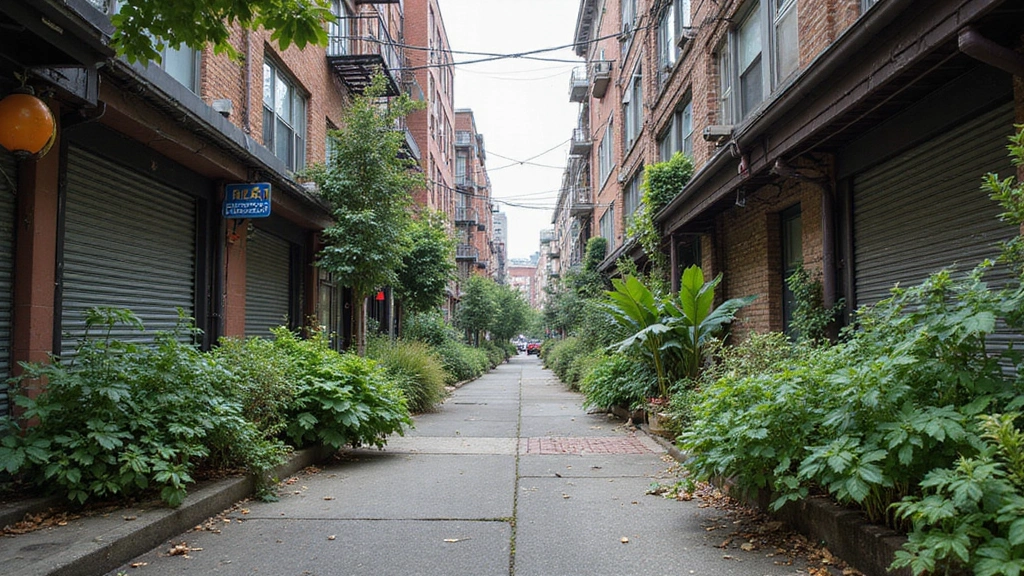When the shelves are empty and the hustle of city life turns into a race for resources, knowing how to source food can be a real lifesaver.
Urban hunting isn’t just for the wild; it’s all about adapting to the concrete jungle. From foraging in parks to utilizing your surroundings, these hacks can help you discover food hidden in plain sight.
Get ready to explore a side of your city you never knew existed and be inspired to think creatively in times of need. You won’t believe the treasures waiting around the corner!
Contents
- 1. Forage for Wild Edibles
- 2. Urban Gardening
- 3. Dumpster Diving
- 4. Community Fridges
- 5. Utilize Local Farmers’ Markets
- 6. Secret City Gardens
- 7. Learn About Local Wildlife
- 8. Seasonal Food Awareness
- 9. Cooking with Leftovers
- 10. Bartering with Neighbors
- 11. Staff Your Own Food Share
1. Forage for Wild Edibles

Cities are often filled with edible plants and herbs that most people walk right by. Think dandelions, clover, and even some ornamental flowers! These plants can be nutritious and often grow in parks, gardens, and even wastelands. When foraging, ensure you can positively identify the plants to avoid any toxic lookalikes. A great resource to consider is the Foraging Guide Book, which helps in identifying and harvesting various wild foods.
Check local regulations regarding foraging to stay within the law and respect nature. For successful foraging, remember to avoid areas near roads or heavily polluted spots. Bringing along a sturdy bag, like this sturdy foraging bag, can make your collection much easier. This water-resistant, collapsible bag is practical for storing your finds while you’re out exploring.
Also, using a plant identification app like PictureThis – Plant Identifier can significantly enhance your foraging experience. It allows you to quickly verify whether a plant is safe to eat, providing peace of mind as you forage.
Remember, foraging not only provides food but also connects you with your environment!
2. Urban Gardening
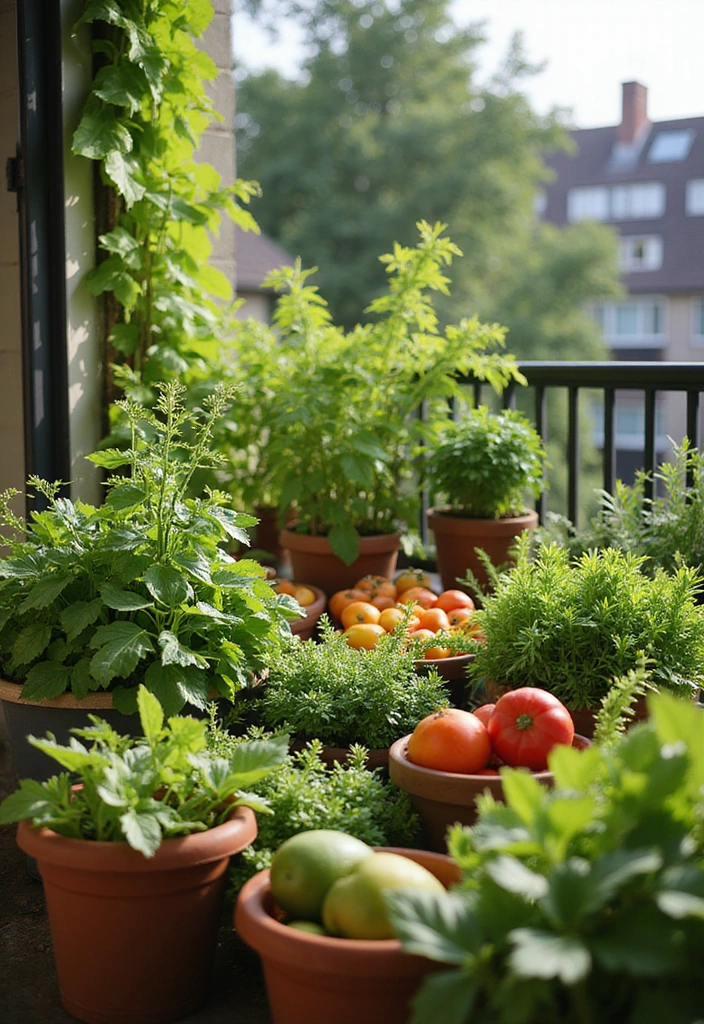
Transforming your balcony or rooftop into a mini-garden can be a game-changer. Growing your own food, even in small spaces, will ensure a steady supply of fresh produce. Herbs like basil and mint are easy to grow in pots, while vegetables such as tomatoes and peppers thrive in containers. For those looking to maximize space, a vertical garden planter can be a fantastic solution, allowing you to cultivate a variety of plants without taking up too much room.
Here are some tips to get started:
– Choose plants that grow well in your climate.
– Use organic soil and compost for nutrients. Consider using organic potting soil to provide a healthy foundation for your plants.
– Regularly water and care for your plants to encourage growth.
With patience and care, your urban garden will not only beautify your space but also provide nourishing food during tough times.
For planting, you’ll need:
– Containers or planters
– Seeds or young plants (like those found in a herb and vegetable seeds variety pack)
Here are some simple steps to guide you:
1. Select a sunny location for your garden.
2. Fill containers with potting soil.
3. Plant seeds or young plants according to package instructions.
4. Water regularly and monitor for pests.
5. Harvest as plants mature.
Frequently Asked Questions:
– What’s the easiest vegetable to grow? Tomatoes!
– How much sun do plants need? At least 6-8 hours a day is ideal.
By incorporating these products into your gardening efforts, you’ll set yourself up for success in growing your own food right from home.
3. Dumpster Diving
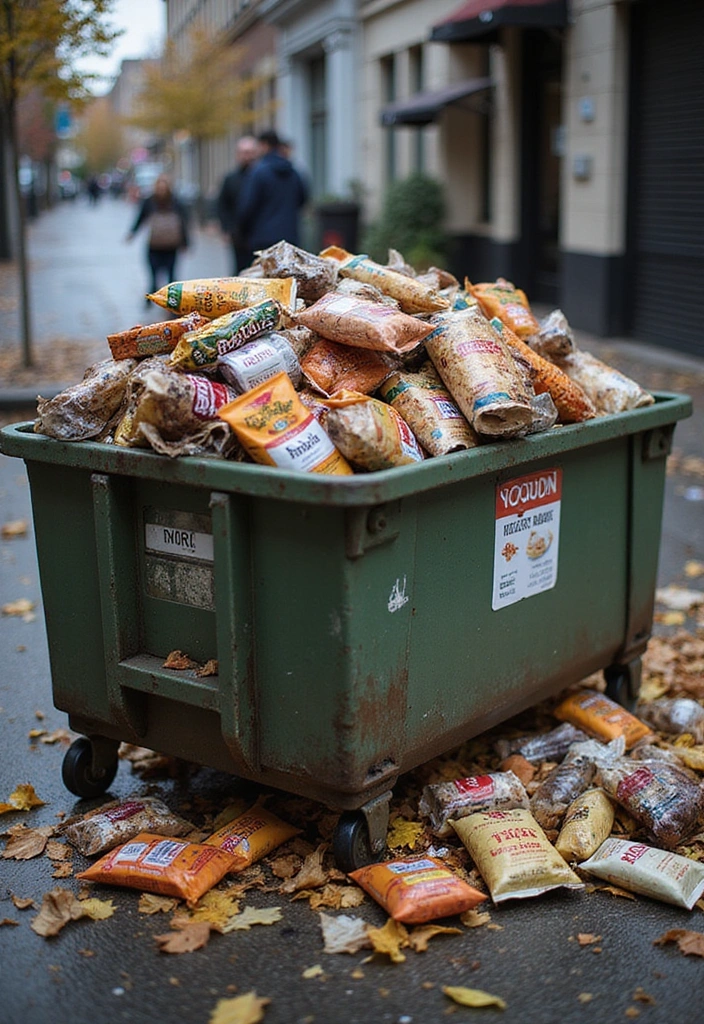
It might sound surprising, but dumpster diving can yield a treasure trove of food. Many grocery stores and bakeries throw away perfectly good food that is still safe to consume. Before you dive in, ensure you’re familiar with local laws and proper dumpster etiquette. Always wear gloves, like reusable heavy-duty gloves, to protect your hands from any contaminants, and bring along a sturdy bag, such as a sturdy reusable tote bag, for your finds!
Diving Tips:
– Visit dumpsters on delivery days for fresher finds.
– Be discreet and respectful to business owners.
– Focus on sealed, packaged items for safety.
With practice, you might find enough food to last you a while!
Recipe Overview:
– Servings: As needed
– Prep Time: Varies
– Total Time: Varies
– Calories: Varies based on finds
Ingredients List:
– Items found (e.g., bread, packaged salads, fruits)
Step-by-Step Instructions:
1. Select a safe and clean dumpster to explore.
2. Check for items that are still sealed and fresh.
3. Gather your finds and head home.
4. Clean and prepare the items as needed. It’s a good idea to have portable hand sanitizer on hand to clean your hands after handling any items.
Frequently Asked Questions:
– Is dumpster diving legal? It depends on your location. Check local laws.
– What should I look for? Packaged items and non-perishables are the best bets.
4. Community Fridges
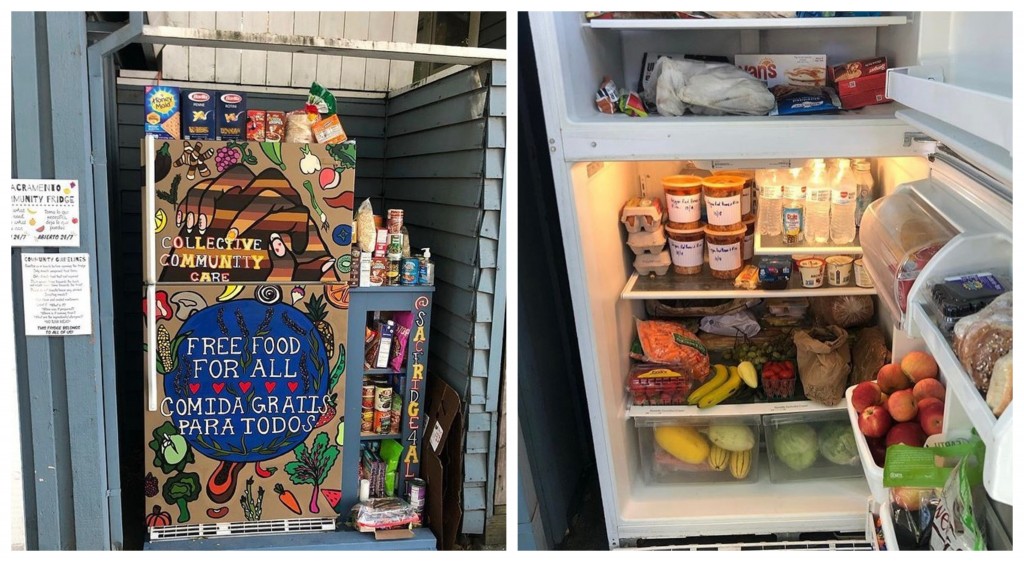
### 4. Community Fridges
Community fridges are popping up across urban areas, offering free food for anyone in need. These fridges are stocked with donations from locals and allow people to take or leave food as needed. It’s a great way to find fresh produce and pantry staples while also supporting your community. To locate a community fridge near you, check local social media groups or community boards.
To make the most of your visits, consider using reusable shopping bags. These heavy-duty bags can help you transport food from the fridge while being eco-friendly. They stand up and stay open, making it easy to quickly grab what you need without fuss.
**How to Participate:**
– Always respect the fridge by keeping it clean.
– Only take what you need.
– Consider donating food if you have extra.
This initiative not only helps individuals in crisis but also fosters a sense of community during difficult times. If you’re thinking about contributing, food storage containers can be a great help. These airtight containers are perfect for organizing any food donations, helping keep perishables fresh and tidy.
**Recipe Overview:**
– Servings: Varies
– Prep Time: 5 minutes
– Total Time: As needed
– Calories: Varies
**Ingredients List:**
– Various items from the community fridge (e.g., vegetables, bread, canned goods)
**Step-by-Step Instructions:**
1. Find a community fridge near you.
2. Check available items and take what you need.
3. Combine ingredients to create simple meals.
4. Consider donating to keep the fridge stocked.
**Frequently Asked Questions:**
– How do I find a community fridge? Look on local social media or community boards.
– What should I donate? Non-perishable items and fresh produce are great options.
5. Utilize Local Farmers’ Markets
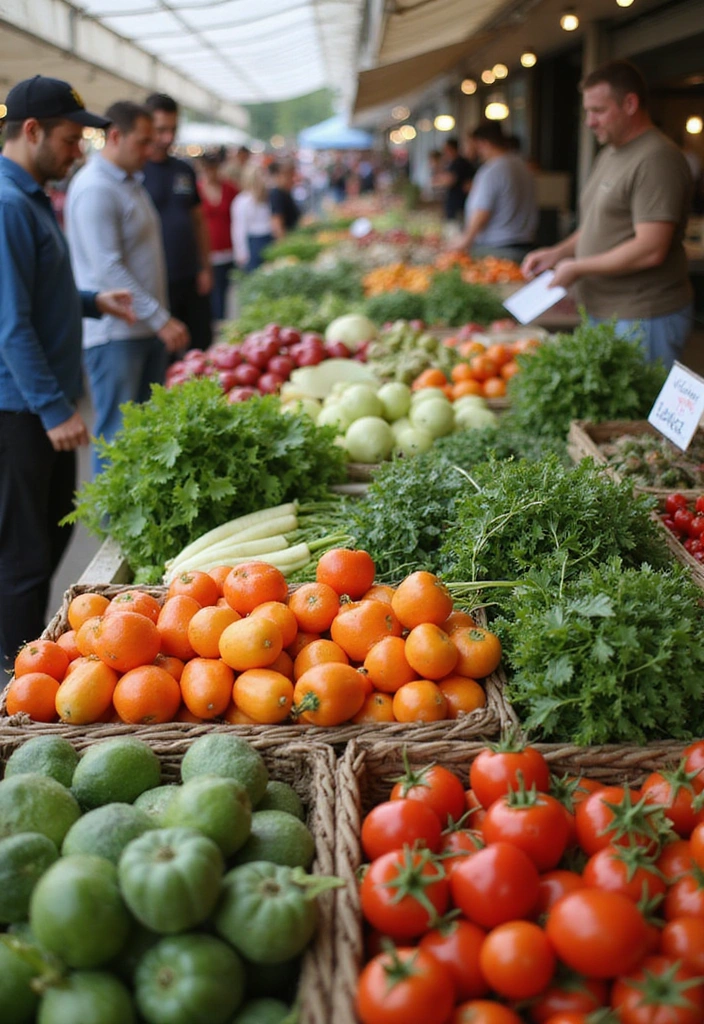
### 5. Utilize Local Farmers’ Markets
Farmers’ markets are fantastic places to score fresh produce at reasonable prices. These markets often feature local foods that are organic and grown in your area. Plus, shopping at these venues supports local farmers and the community! Keep an eye out for ‘end-of-day’ discounts, where vendors sell items at lower prices to avoid waste.
To make the most of your farmers’ market experience, consider bringing along some convenient items. For instance, reusable shopping bags are a great choice. Not only do they help reduce waste, but their sturdy design makes it easy to carry home your fresh finds.
Market Tips:
– Go early for the best selection or late for discounts.
– Bring cash and reusable bags.
– Talk to farmers about what’s in season for the best deals.
When it comes to preparing your fresh produce, having the right tools can make a difference. A vegetable chopper can save you time and effort in the kitchen, allowing you to clean and chop vegetables quickly for your meals.
With a little strategy and the right tools, you can stock up on nutritious food without breaking the bank. Don’t forget to drizzle your roasted vegetables with olive oil from an olive oil dispenser bottle for added flavor!
#### Recipe Overview:
– Servings: 2-4
– Prep Time: 10 minutes
– Total Time: 10 minutes
– Calories: Varies based on ingredients
#### Ingredients List:
– 1 lb of seasonal vegetables (carrots, zucchini)
– Variety of fresh herbs (parsley, cilantro)
– Olive oil
– Salt and pepper to taste
#### Step-by-Step Instructions:
1. Clean and chop vegetables.
2. Toss them with olive oil, salt, and pepper.
3. Spread on a baking sheet and roast at 400°F for 20-30 minutes.
4. Garnish with fresh herbs before serving.
#### Frequently Asked Questions:
– What’s the best time to go to farmers’ markets? Early in the morning or close to closing time!
– Do I need to bring my own bags? Yes, reusable bags are encouraged.
6. Secret City Gardens
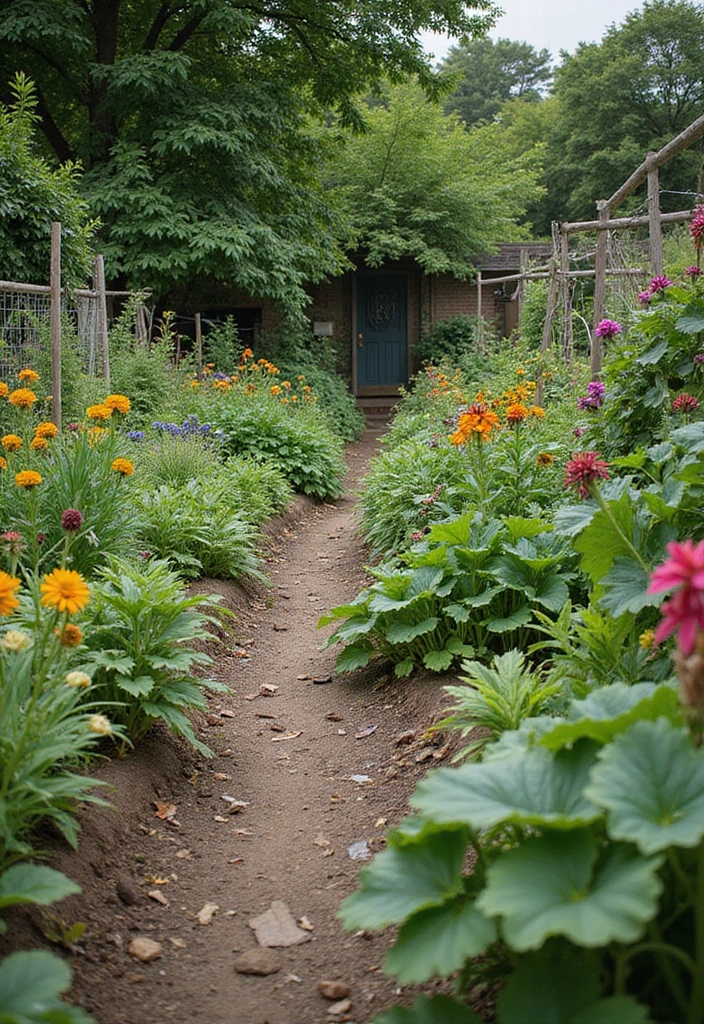
Hidden gems like community gardens and secret parks can be a source of free food. These gardens often have fruits, vegetables, and herbs planted by locals who share the responsibility of maintaining them. It’s worth investigating your neighborhood to see if any underutilized spaces can provide fresh supplies. Make sure to follow the community guidelines for harvesting.
To make your foraging experience more enjoyable and efficient, consider bringing along a few useful tools. For example, gardening gloves can protect your hands and give you a better grip while you harvest fresh goodies. Additionally, a hand trowel can be invaluable for digging up root vegetables or loosening soil around plants.
Finding gardens is easy with a little research:
– Use community maps or apps to locate nearby gardens.
– Reach out to local gardening clubs for recommendations.
– Always ask before taking anything to ensure you respect community efforts.
Once you’ve gathered some fresh finds, make sure to have reusable produce bags on hand for transporting your harvest. These bags are lightweight and durable, perfect for storing your fruits and veggies without causing damage.
Secret gardens can be peaceful havens filled with the bounty of nature right in the city!
Recipe Overview:
– Servings: 2
– Prep Time: 15 minutes
– Total Time: 15 minutes
– Calories: Varies based on ingredients
Ingredients List:
– Various garden finds (e.g., tomatoes, kale, herbs)
– Olive oil
– Balsamic vinegar (optional)
– Salt and pepper to taste
Step-by-Step Instructions:
1. Harvest fresh vegetables and herbs.
2. Rinse thoroughly.
3. Chop and toss with olive oil, vinegar, salt, and pepper.
4. Enjoy as a fresh salad or side dish!
Frequently Asked Questions:
– Can I take food from community gardens? Always check guidelines first!
– How can I find out about more gardens? Connect with local gardening groups.
7. Learn About Local Wildlife

Urban wildlife can sometimes offer unexpected food sources. Birds, squirrels, and even raccoons are part of the ecosystem that can provide insights into where to find food. Learning what animals eat can guide you to natural food sources like nuts, fruits, and edible plants. For a closer look at local wildlife, consider using binoculars; they allow you to observe animal patterns from a distance, helping you spot feeding habits and potential food sources safely.
Always ensure you’re aware of local wildlife regulations and safety considerations before attempting to harvest from nature. Here are some wildlife tips to keep in mind:
– Observe animal patterns to find food sources.
– Be cautious and respectful of wildlife spaces.
– Use binoculars to spot and identify animals safely.
To deepen your understanding of what is safe to eat in your area, a helpful resource is a field guide. Consider getting a copy of Edible Wild Plants: a North American Field Guide to Over 200 Natural Foods, which can provide valuable information on identifying edible plants. Connecting with the local ecosystem can uncover a wealth of resources that might have gone unnoticed.
Recipe Overview:
– Servings: Varies
– Prep Time: 5 minutes
– Total Time: As needed
– Calories: N/A
Ingredients List:
– Nuts, berries, or fruits found in the area
Step-by-Step Instructions:
1. Identify wildlife-friendly areas to explore.
2. Look for food sources like nut trees or berry bushes.
3. Harvest responsibly, ensuring minimal impact on wildlife.
4. Use harvested items in various dishes.
Frequently Asked Questions:
– What should I look for when observing wildlife? Focus on their feeding habits.
– Is it safe to eat what animals find? Always check for proper identification.
8. Seasonal Food Awareness
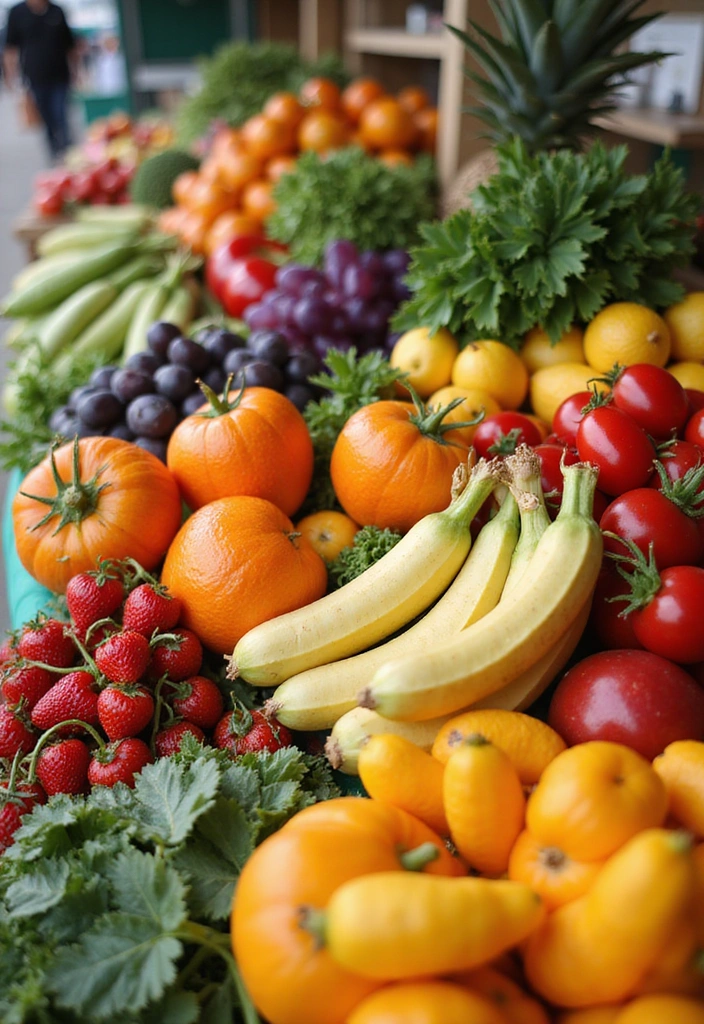
Understanding which foods are in season can make locating sources much easier. Seasonal eating often means fresher, tastier food, and cities frequently host various community events or markets showcasing seasonal produce. Knowing when to look for certain foods can significantly improve your sourcing success. For instance, spring might bring an abundance of leafy greens, while summer is ideal for tomatoes and berries.
To help you navigate seasonal availability, consider keeping a seasonal food chart handy. This easy-to-follow fridge magnet will help you reference what’s available throughout the year, making it easier to plan meals with fresh ingredients. Additionally, visiting local food co-ops can uncover seasonal offers that support local farmers and give you access to the best the season has to offer.
Joining community-supported agriculture (CSA) programs is another great way to gain direct access to seasonal crops right from the source. These programs not only provide fresh produce but also foster a sense of community and connection to your food.
To enhance your experience with seasonal cooking, consider starting your own herb garden with a herb garden starter kit. With herbs like basil, cilantro, and mint at your fingertips, you can elevate your dishes and truly enjoy the flavors of the season.
Being aware of the seasons not only helps with sourcing but also enhances your cooking and meal planning!
9. Cooking with Leftovers
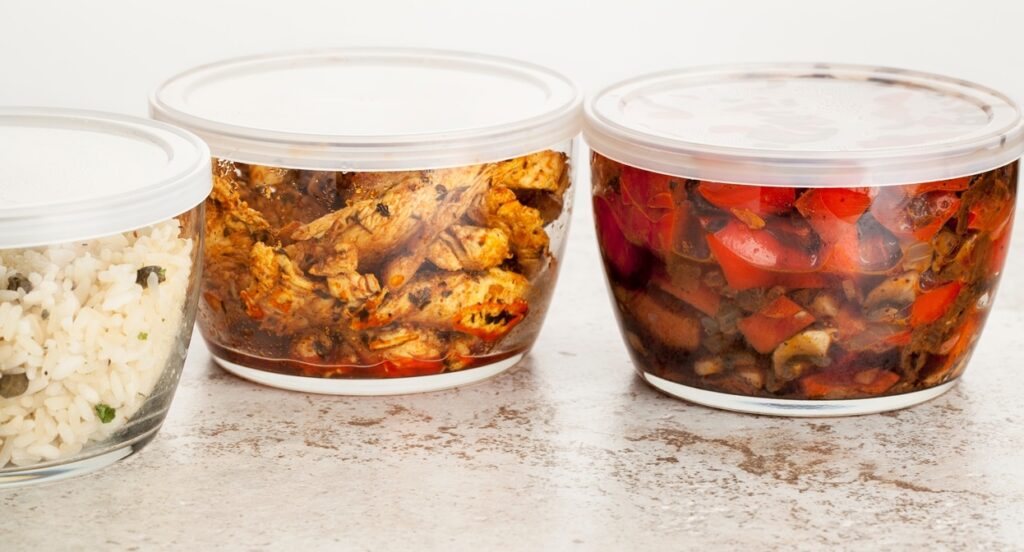
In a crisis, utilizing leftovers can stretch your food supply further. Get creative with what you have and transform scraps into delicious meals. For instance, vegetable peels can be used to make broths, while stale bread can be turned into croutons or breadcrumbs. Not only does this minimize waste, but it also encourages inventive cooking!
To help manage your leftovers effectively, consider investing in food storage containers. These airtight containers will keep your ingredients fresh longer, allowing you to make the most of what you have. Additionally, having a solid vegetable peeler on hand can help you make the most of your vegetables, ensuring no scraps go to waste.
Leftover Tips:
– Store food properly with airtight containers to extend its life.
– Plan meals around what’s left in your fridge.
– Share leftover meals with friends or neighbors to foster community.
Reimagining what you already have can lead to surprisingly delightful dishes. Spice up your creations with an organized selection from an herb and spice rack, which provides a variety of flavors at your fingertips.
Recipe Overview:
– Servings: 2
– Prep Time: 10 minutes
– Total Time: 30 minutes
– Calories: Varies
Ingredients List:
– Leftover vegetables
– Stale bread or grains
– Spices and seasonings
Step-by-Step Instructions:
1. Gather all leftovers and assess what can be reused.
2. Create a stir-fry, soup, or salad with mixed ingredients.
3. Spice it up with herbs or sauces you have on hand.
4. Serve and enjoy the waste-free meal!
Frequently Asked Questions:
– Can I cook with expired food? Always check for spoilage before using.
– What are some good leftover recipes? Soups, stir-fries, and casseroles are great options.
10. Bartering with Neighbors
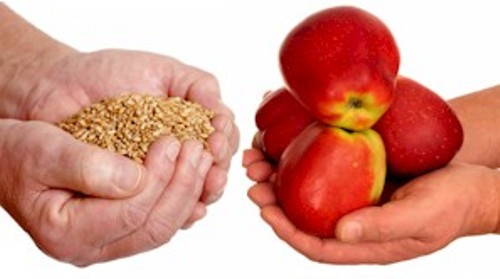
In times of crisis, bartering can be an effective way to obtain food. Whether you have garden produce, homemade goods, or skills to offer, trading with neighbors builds community and ensures everyone stays fed. Utilizing social media platforms can facilitate these exchanges within local groups. Think about what you can offer in return for food items!
If you’re considering what goods you can provide, investing in gardening tools can significantly enhance your ability to grow fresh produce. A comprehensive gardening tool set will help you cultivate a productive garden, giving you more to barter with your neighbors.
Bartering Tips:
– Communicate openly with neighbors about needs and offerings.
– Be fair and honest in all exchanges.
– Build relationships for future trades.
Creating a bartering system strengthens community ties while ensuring access to food resources. If you are looking to expand your culinary skills for home-cooked meals to trade, consider picking up a copy of the cookbook for home-cooked meals. This resource offers simple recipes that can help you create delicious dishes to exchange with others.
Recipe Overview:
– Servings: Varies
– Prep Time: 5 minutes
– Total Time: As needed
– Calories: N/A
Ingredients List:
– Goods you can offer for trade
– Items received through barter
Step-by-Step Instructions:
1. Identify what you can offer in barter.
2. Reach out to neighbors for potential exchanges.
3. Engage in fair trades and enjoy your new ingredients!
Frequently Asked Questions:
– What is a good item to barter with? Home-cooked meals, extra produce, or skills like gardening or tutoring!
– How do I find barter partners? Social media and community boards are excellent resources.
11. Staff Your Own Food Share
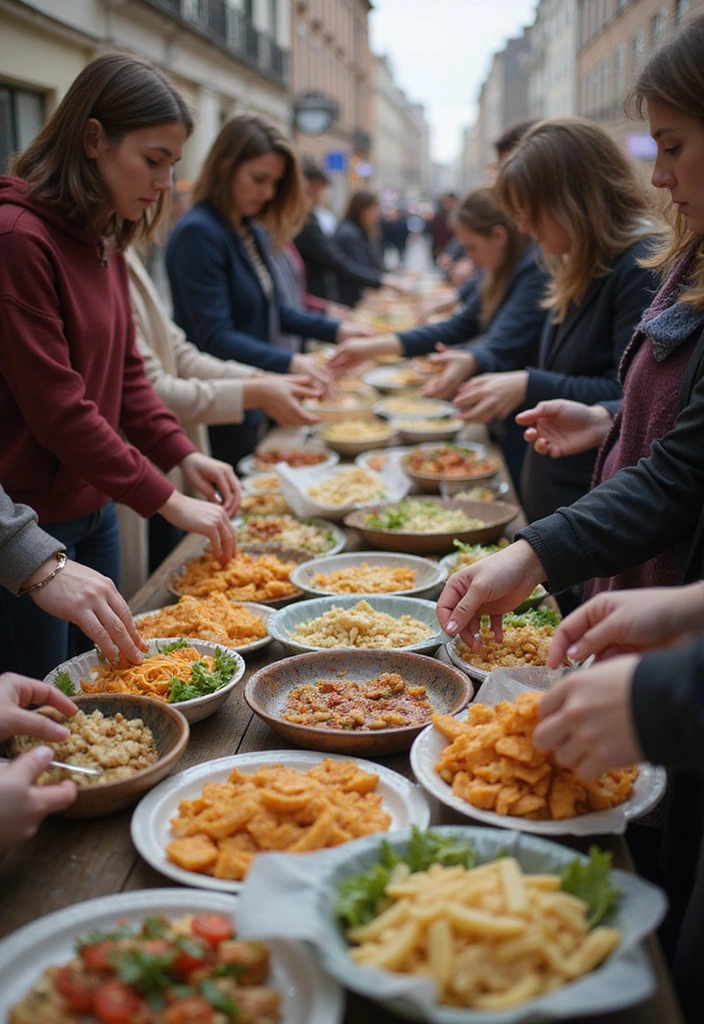
Starting a food share can make a significant impact in your community during a crisis. By organizing a group of people to contribute, you can create a collective supply of food that anyone can access. This can be as simple as a designated shelf in a building or a more formal community pantry. To keep your food share organized, consider using food storage containers like the Airtight Food Storage Containers with Lids. These can help preserve the freshness of dry goods and make it easier to manage your supplies. Set clear guidelines on what can be shared and how often.
Starting a food share:
– Gather a group of interested individuals.
– Decide on a location and food types to share.
– Create a schedule for stocking and maintaining it.
Not only does this foster community spirit, but it also ensures that everyone has access to food during tough times.
For organizing food types, you might find the community pantry supplies kit from AuldHome Design particularly helpful. These divided compartment bins are perfect for organizing food mixes and spice packets, making it easier for community members to find what they need.
Recipe overview:
– Servings: Community-wide
– Prep time: N/A
– Total time: Ongoing
– Calories: Varies
Ingredients list:
– Food donations from community members
Step-by-step instructions:
1. Organize a meeting with interested neighbors.
2. Determine logistics and responsibilities.
3. Spread the word about your food share program.
4. Regularly check and replenish stocks with donations or items like the non-perishable food items variety pack from KJ Poultry, which offers a range of fully cooked, shelf-stable meals suitable for emergencies.
Frequently asked questions:
– How can I get people involved? Reach out through social media or community boards!
– What types of food can be shared? Non-perishable items, fresh produce, and canned goods work well.
Conclusion
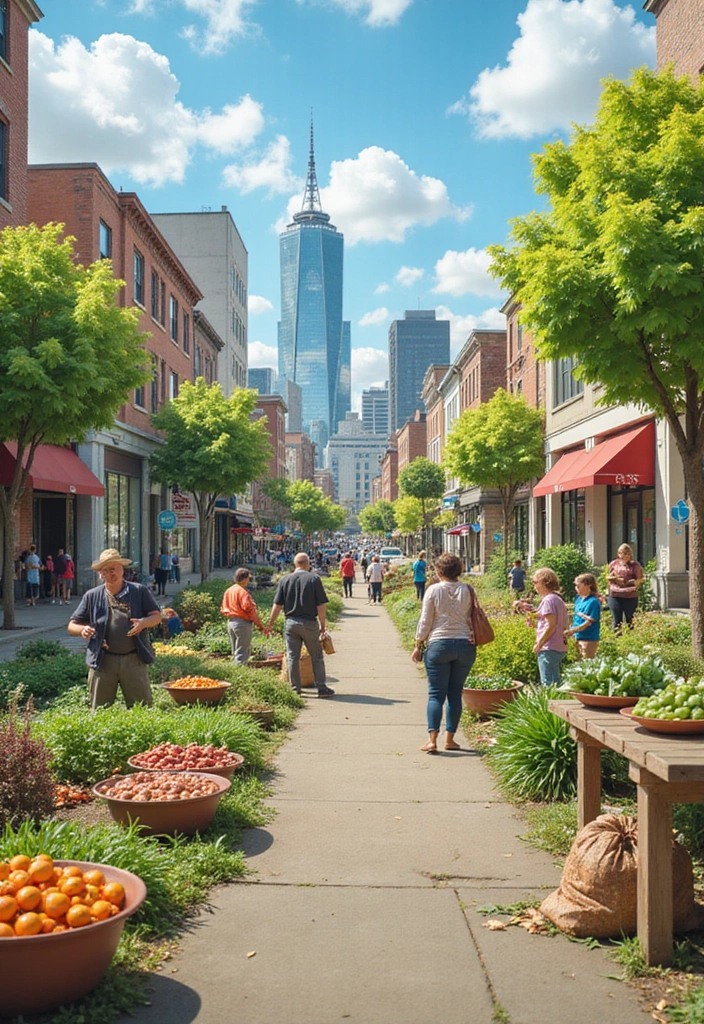
Urban survival can be daunting, but these hacks turn the city into a resource-rich environment.
By exploring your surroundings and tapping into community resources, you can discover food sources that are often overlooked. Embrace creativity, community, and adaptability to thrive in challenging times. Stay curious, and don’t forget to share your own urban hunting tips! Together, we can navigate any crisis.
Note: We aim to provide accurate product links, but some may occasionally expire or become unavailable. If this happens, please search directly on Amazon for the product or a suitable alternative.
This post contains Amazon affiliate links, meaning I may earn a small commission if you purchase through my links, at no extra cost to you.

